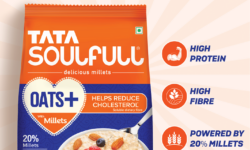The next time you reach for that fresh-looking apple on the shelf of your grocer, you should reconsider taking a bite out of it lest you poison yourself. An article in Natural Health 365 warned that a nasty chemical covers four out of every five apples that were grown through conventional, non-organic means.
The chemical is called diphenylamine. It is an artificial preservative that makes the fruits look fresher than they really are. It is also toxic to human health.
The artificial means of their cultivation and harvest have all but assured that non-organic apples will contain dangerous levels of numerous synthetic chemicals. The environmental activist group Environmental Working Group reported that the typical conventionally-grown apple contains residues from 4.4 different pesticides.
Several of these leftover chemicals are highly concentrated in the fruit. Diphenylamine is one such long-lasting contaminant. The reason for its use is mainly cosmetic and supposedly preservative.
Apples are easily bruised or damaged, especially when they are being stored and transported. Their skins develop ugly patches of black or brown called “apple scald” or “storage scald.”
Storage scald does not detract from the edibility of the fruit. But it does make them look bad, which turns off potential customers and leads to apples sitting on shelves.
In response, conventional farmers spray diphenylamine onto apples before they are packed. The chemical prevents storage scald from appearing on the skin of the valuable produce, thereby increasing the appealing look of the fruit.
Diphenylamine is the pesticide with the highest concentration level in apples because it is applied after the harvest. Lower levels and concentrations of it have also been detected in 36 percent of applesauce types.
A 2016 study conducted by the U.S. Department of Agriculture (USDA) reported that 80 percent of conventionally-grown apples contain diphenylamine. The average concentration per individual fruit is 0.28 parts per million (0.28 ppm).




